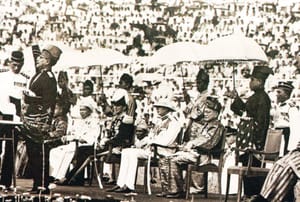Much can be told about a country’s character through its laws. Correspondingly, the transformation of a country’s legal regime over time can be said to be a reflection of the socio-political evolution of its society.
Take the Constitution of the United States of America. To date, there have been 27 amendments since its promulgation in 1789. The first ten amendments are collectively known as the Bill of Rights, and spells out the aspirations and desires of a fledgling nation in the form of a solemn promise of fundamental rights in relation to religion, speech, press, assembly, the right to bear arms and protections in the criminal justice system.
Following the end of the Civil War in 1865, amendments were made to abolish slavery and further define the rights of its citizens. As the twentieth century got underway, the Constitution was further amended to reflect the changing times – voting rights for women, tax concerns and that peculiar period in modern American history known as Prohibition.
In 1963 the assassination of President John F. Kennedy paved the way for the 25th amendment, which establishes clear procedures for filling the post in the case of an abrupt vacancy. In 1971, following nationwide student activism in protest of the Vietnam War, the Constitution was amended for the 26th time to lower the voting age from 21 to 18.







